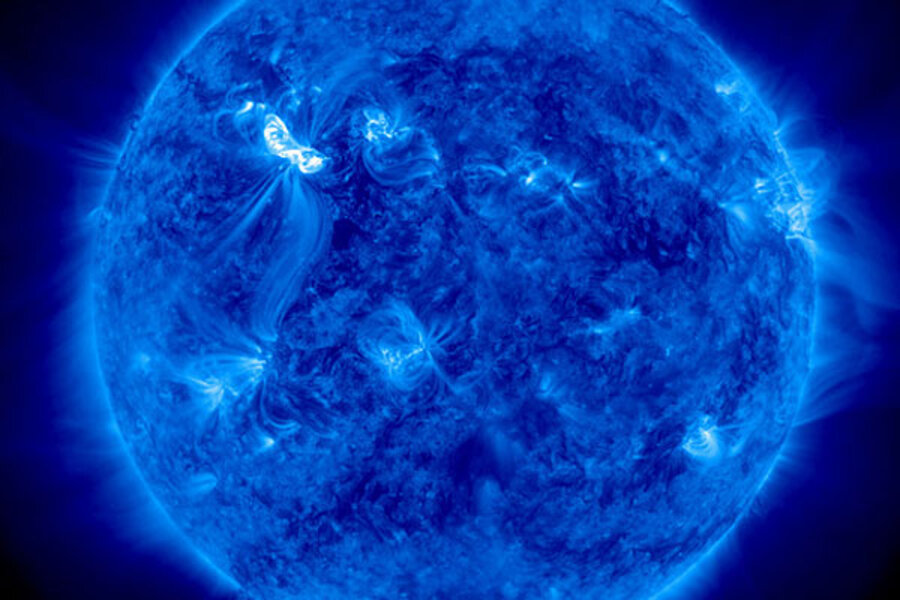Biggest solar storm in years now bombarding Earth
Loading...
The biggest solar storm in five years is battering our planet right now, and may cause disruptions to satellites, power grids and communications networks over the next 24 hours, space weather experts say.
Two strong solar flares erupted from the surface of the sun late Tuesday (March 6), blasting a wave of plasma and charged particles toward Earth. After speeding through space at 4 million mph, this eruption of material — called a coronal mass ejection (CME) — should be hitting Earth now.
The storm is expected to create strong disruptions due to an odd combination of intense magnetic, radio and radiation emissions, making it the strongest overall solar storm since December 2006, even though the flare that triggered it was not the largest, space weather officials said.
The CME reached Earth this morning at about 5:45 a.m. EST (1045 GMT), according to officials at the Space Weather Prediction Center, which is jointly managed by the National Oceanic and Atmospheric Administration (NOAA) and the National Weather Service. While the CME did not hit Earth head-on, the material delivered a glancing blow to the planet, and energetic particles will continue to interact with Earth's magnetic field over the course of the day.
The CME will likely trigger geomagnetic and solar radiation storms today, which could interfere with satellites in space and power grids on the ground, said Joseph Kunches, a space weather scientist at NOAA. Aircraft that fly over the Earth's polar caps may potentially experience communications issues as well, and some commercial airliners have already taken precautionary steps, Kunches said.
"There is the potential for induced currents in power grids," Kunches told reporters Wednesday. "Power grid operators have all been alerted. It could start to cause some unwanted induced currents."
The effects of this solar storm will likely last for 24 hours, and may possibly linger into Friday (March 9), Kunches said.
"Such a CME could result in a severe geomagnetic storm, causing aurora at low latitudes, with possible disruption to high frequency radio communication, global positioning systems (GPS), and power grids," NASA scientists said in a statement.
Experts also predict that the magnetic storm will likely enhance normal aurora displays (also known as the northern and southern lights). As the effects of the CME bombard Earth, these stunning light shows will be especially visible for people where it is currently night, though the full moon of March, which also occurs Thursday, may interfere with the display.
"Skywatchers at all latitudes should be alert for auroras," astronomer Tony Phillips wrote on his website Spaceweather.com, which regularly monitors space weather events.
If you snap an amazing photo of the northern lights sparked by these sun storms and would like to share it for a possible story or image gallery, please contact SPACE.com managing editor Tariq Malik at tmalik@space.com.
You can follow SPACE.com staff writer Denise Chow on Twitter @denisechow. Follow SPACE.com for the latest in space science and exploration news on Twitter @Spacedotcom and on Facebook.







